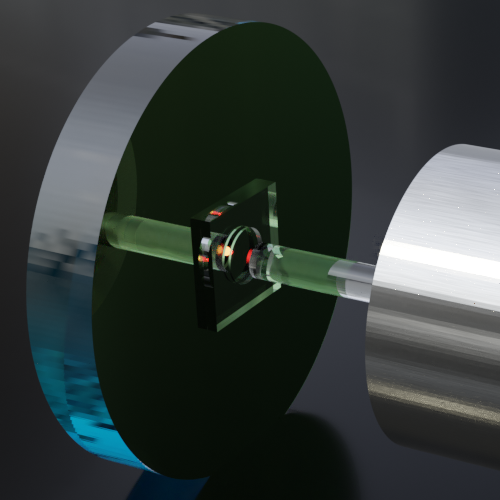Spin-photon interface for color centers in diamond

Building a long distance quantum network is one of the big challenges in the field of quantum communication, which requires the development of a quantum repeater. A crucial component of this is an efficient, coherent spin photon interface, and coupling single color centers in diamond to a microcavity is a promising approach therefore. In our experiments, we integrate a diamond membrane to an open access fiber-based Fabry-Perot microcavity [Heupel et al., Micromachines 2020] to attain emission enhancement into a single well-collectable mode as well as spectral filtering. Simulations predict the feasibility of a strong enhancement of the Zero-Phonon-Line (ZPL) emission efficiency, reaching values of up to 80%. We have performed spatially resolved characterizations of different coupled cavity-membrane devices and observed significant effects of the diamond membrane on the cavity mode properties [Körber et al]. We have also integrated such devices in a cryogenic environment and achieved highest mechanical stability for operation under resonance conditions [Pallmann et al. 2023].
Recently, in collaboration with Wolfgang Wernsdorfer and Christoph Becher, we have started to study the SnV center in diamond as a promising alternative. We have observed Fourier-limited and long-term stable optical transitions, long spin lifetime at sub-K temperature, and achieved coherent spin control by straining the diamond as well as by using a superconducting waveguide to avoid heating due to dissipation. This allowed us to observe electron spin coherence of up to 10ms under dynamical decoupling [Karapatzakis et al., 2024].

